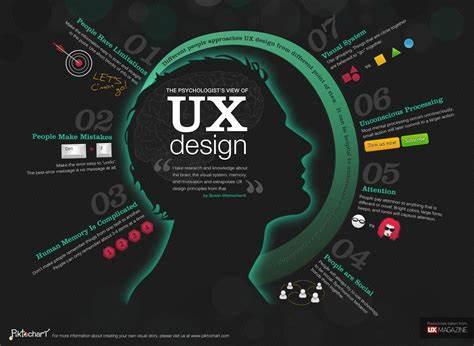Inquire
Navigating the Digital Evolution: A Brief History of UX and UI

User Experience (UX) and User Interface (UI) design are more than just buzzwords; they are the pillars upon which the digital world is built. Understanding their evolution is crucial in appreciating the seamless experiences we enjoy today. In this article, we will embark on a journey through time to explore the fascinating history of UX and UI, and how they have transformed the way we interact with technology.
**The Pioneering Days of Computing:**
The origins of UX and UI can be traced back to the early days of computing, where these concepts were in their infancy. In the 1950s and 1960s, computers were primarily tools for scientists and engineers. User interfaces were text-based, and interactions were confined to command lines. The emphasis was purely on functionality, and user experience was a secondary concern.
**The Desktop Revolution:**
The 1980s and 1990s marked a significant turning point in the history of UX and UI. The introduction of personal computers brought graphical user interfaces (GUIs) into the mainstream. Icons, windows, and a mouse allowed for more intuitive interactions. Apple's Macintosh, with its groundbreaking UI, and Microsoft Windows, contributed to the widespread adoption of GUIs.
**The Internet Age and Web Design:**
The advent of the World Wide Web in the 1990s gave rise to a new realm of design challenges. Web designers needed to create user-friendly interfaces for the rapidly growing online audience. This era saw the birth of HTML and CSS, and the evolution of web design principles, focusing on layouts, navigation, and content structure.
**The Mobile Revolution:**
In the 21st century, the proliferation of smartphones marked another pivotal moment in the history of UX and UI. Touchscreens and mobile apps transformed how people interacted with digital devices. Responsive web design became essential to ensure a consistent experience across different screen sizes. Mobile apps introduced gestures and touch-based interactions.
**User-Centered Design:**
The concept of user-centered design gained prominence as UX and UI professionals began to prioritize the user's needs and preferences. Usability testing, user research, and iterative design processes became standard practices. The goal was to create products and interfaces that were not only functional but also enjoyable to use.
**The Rise of Flat Design and Minimalism:**
Around the mid-2010s, there was a shift towards flat design and minimalism. Companies like Apple, Google, and Microsoft embraced this design philosophy, favoring simplicity, clean lines, and a focus on content. Flat design influenced mobile app design, web design, and even the design of operating systems.
**Emerging Trends:**
Today, UX and UI continue to evolve, driven by emerging technologies such as virtual reality (VR), augmented reality (AR), voice interfaces, and artificial intelligence (AI). Designers are faced with new challenges in creating intuitive interfaces for these technologies while maintaining a strong user-centered approach.
**Conclusion:**
The history of UX and UI is a story of progress, from the early days of functional interfaces to the present, where user-centered design principles and aesthetics have converged to create the digital experiences we enjoy today. As technology continues to advance, UX and UI design will remain at the forefront of innovation, shaping how we interact with the digital world. Understanding this history is not only a lesson in design but also a testament to the human capacity for enhancing and perfecting the way we engage with technology.

- Managerial Effectiveness!
- Future and Predictions
- Motivatinal / Inspiring
- Other
- Entrepreneurship
- Mentoring & Guidance
- Marketing
- Networking
- HR & Recruiting
- Literature
- Shopping
- Career Management & Advancement


 SkillClick
SkillClick